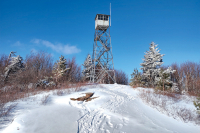Guess Who's Coming To Dinner?
By Sabrina Matheny • Rumble Contributor | Last weekend I had dinner with friends and felt so grateful to be with such awesome people. Think back to the times that you gathered with those you hadn’t seen in a while and nutshelled each other as to what was new and different in order to share your lives. I was having one of these mini conversations with an old friend and she asked me to remind her of my date’s name. As I did, I added a fun way to remember his name to avoid any awkwardness between them. She looked at me and said, “I don’t need help remembering that name. I had a good friend named ….”
Family, friends and gratitude: a great American holiday
With Thanksgiving just around the corner, I raided my public library, brought home an armload of books having to do with Turkey Day, and am delighted to share them with you here.
Be smart, and things don’t have to get worse
Let me wish each and every one of you a Happy Thanksgiving. Each year at the Passover celebration, there is a saying: “Next year in Jerusalem.” It’s a way of saying: “next year may we be in a better place.’’ Right now, I bet we can all get behind that.
This must be the place: They’re cutting through the steady wind and landing on the ground
Like every Thanksgiving, I’ll figure something out.
With my family over 1,000 miles away back up in the North Country, I tend to be an orphan during this holiday feast in Western North Carolina. Luckily, over the last eight years here, I’ve been invited into homes all over Southern Appalachia, where the food is plentiful and there’s always an extra seat at the table for you.
Grocery store is stuffed like a Thanksgiving turkey
Mushrooms. I needed mushrooms, and mushrooms were all I needed. It was my night to cook, and I wanted to make spaghetti because we’ve eaten chicken approximately 11 consecutive nights at my house. We’ve done that because the members of my family have developed “dietary restrictions” over the years to the extent that we are down to approximately three dishes that we can agree on, one of those being chicken prepared about a dozen different ways.
Thoughts on Thanksgiving and traditions
Funny how when you’re living in a moment, you don’t realize how truly special the moment is. Only later in life does the full onslaught of gratitude cover you like a warm nostalgic blanket. That’s how I feel when I reflect upon Thanksgiving days of the past.
Every Thanksgiving morning, my sister and I would wake up and wander into the kitchen bleary-eyed and still wearing pajamas. As the Asheville Christmas Parade played on WLOS, my mom would be sipping coffee and have already cooked cornbread and biscuits, the beginning ingredients for my great-grandmother’s dressing recipe.
This must be the place: ‘Rejoice, rejoice, we have no choice but to carry on’
I couldn’t believe she gave me a ticket.
Thanksgiving 2001. I was 16 years old. Having just ate a quick meal with my family up on the Canadian Border of Upstate New York, I jumped into my rusty 1989 Toyota Camry and bolted down the road towards Vermontville, a tiny hamlet in the heart of the desolate Adirondack Mountains.
This must be the place: Pass the gravy, and the memories
It was right around the second beer when I began to settle in.
The warm sunshine and lingering foliage of metropolitan Charlotte was in stark contrast to the chilly air and empty trees of the mountains of Western North Carolina. But, with my aunt and cousin within arm’s reach, and my girlfriend beside me, I immersed myself into the Thanksgiving gathering last week.
A new kind of Thanksgiving
Holidays are all fun and games until death and divorce happen. Then they become an aching headache, if a person lets them. My goal is to ward off that headache by any means possible.
I’ve been throwing around ideas for this column over the past week. Thanksgiving is the obvious choice. It’s impossible to write about this day in the same manner as two or three years ago. I remember writing a column back then titled “Surviving Thanksgiving.” It was a light, humorous piece suggesting activities to entertain kids while the adults cooked, drank wine, watched football and conversed about holiday shopping.
In a season of feasting, finding food for the soul
I’ve always embraced change, perhaps to my detriment. I suspect it has something to do with a youth where we moved to different homes as often as most people buy new sneakers, so it just seems normal — and somewhat cathartic — to do things differently, even to the point of dropping old traditions and embracing new ones.
But some change I can’t accept, and one of those is Thanksgiving without deviled eggs that taste as much like my mom’s as possible. Some things are, after all, sacrosanct.













